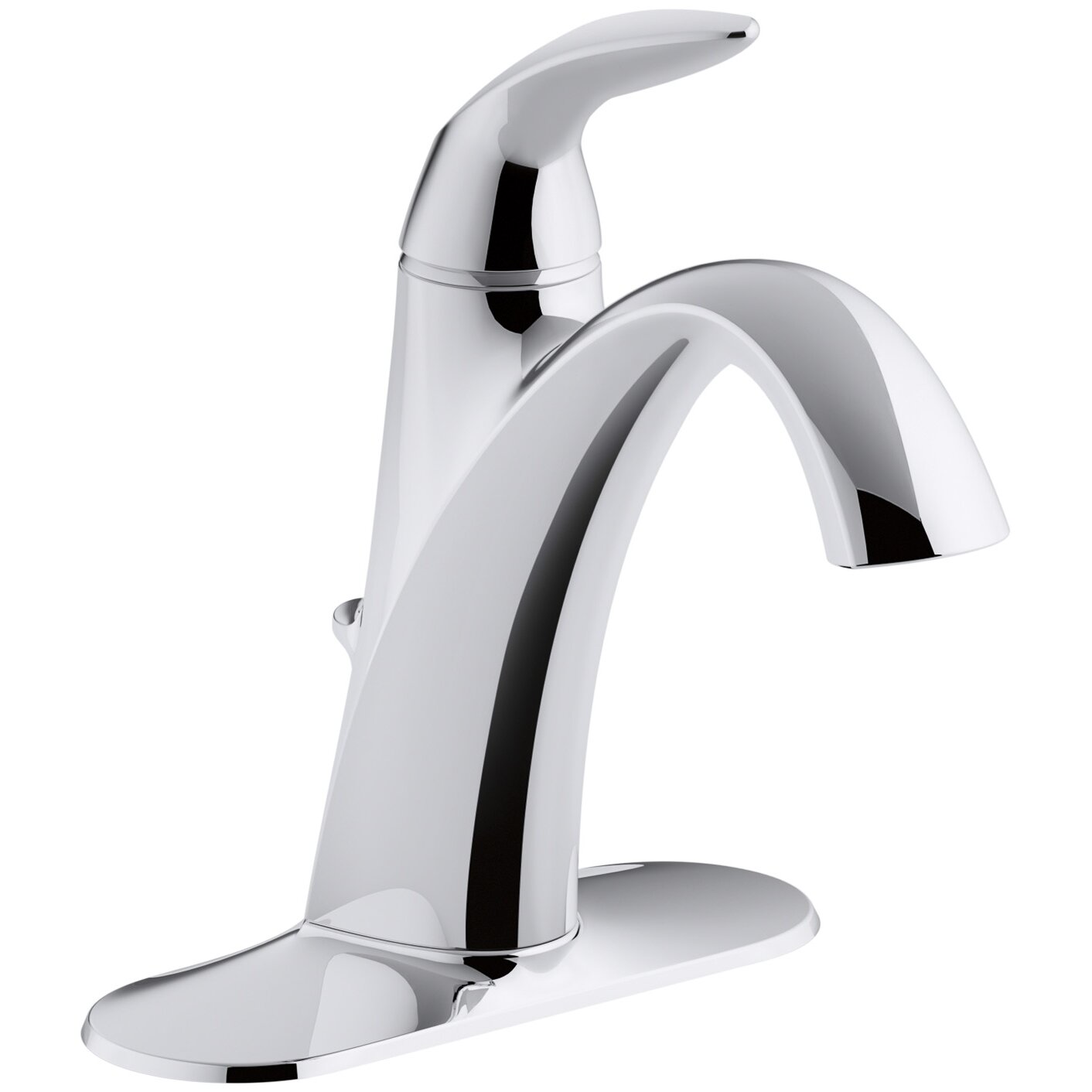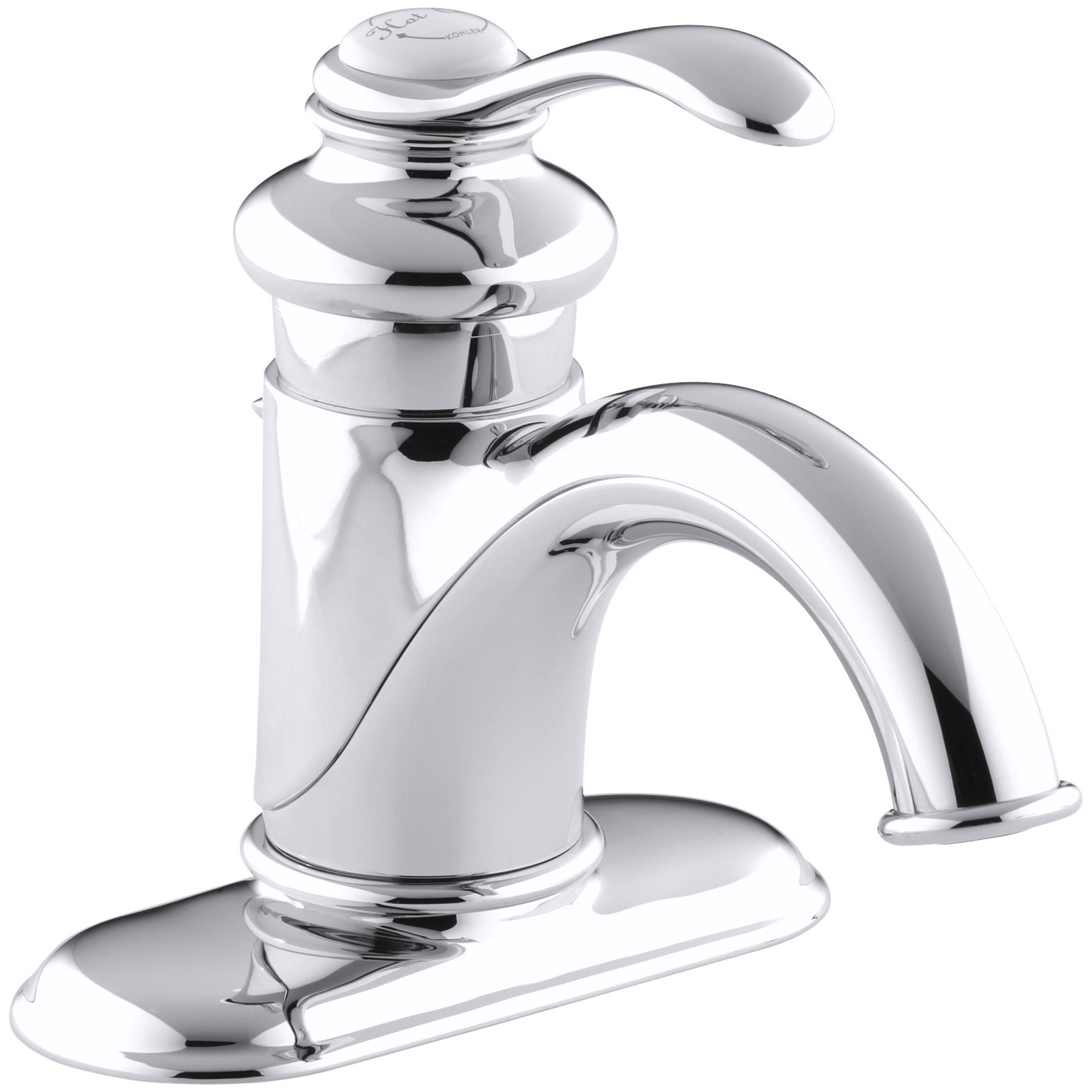Kohler Single Handle Bathroom Faucet Features

Kohler single-handle bathroom faucets offer a wide range of features and styles to suit any bathroom design. These faucets are known for their durability, reliability, and stylish designs. This section will explore the various features of Kohler single-handle bathroom faucets, providing insights into their design, functionality, and performance.
Finishes
Kohler offers a wide variety of finishes for its single-handle bathroom faucets, allowing you to choose a style that complements your bathroom décor. Some of the most popular finishes include:
- Polished Chrome: A classic and timeless finish that is both elegant and easy to clean. It reflects light well, making it ideal for bathrooms with modern or traditional designs.
- Brushed Nickel: A contemporary finish with a subtle, brushed texture that adds a touch of sophistication to any bathroom. It is less prone to fingerprints and water spots than polished chrome.
- Oil-Rubbed Bronze: A warm and rustic finish that adds a touch of elegance and character to a bathroom. It is a popular choice for bathrooms with traditional or farmhouse designs.
- Matte Black: A sleek and modern finish that adds a touch of drama and sophistication to any bathroom. It is a popular choice for bathrooms with contemporary or industrial designs.
Advantages of Single-Handle Faucets
Single-handle bathroom faucets offer several advantages over two-handle faucets, making them a popular choice for modern bathrooms.
- Ease of Use: Single-handle faucets are easy to control with just one lever, making them convenient for people of all ages and abilities.
- Precise Temperature Control: The single lever allows for precise control of water temperature, eliminating the need to adjust two separate handles.
- Space-Saving Design: Single-handle faucets take up less space on the countertop than two-handle faucets, making them ideal for smaller bathrooms.
- Modern Aesthetics: Single-handle faucets have a sleek and modern design that complements contemporary bathroom styles.
Spout Styles
Kohler offers a variety of spout styles for its single-handle bathroom faucets, each designed to suit different sink types and bathroom designs.
- Standard Spout: A traditional spout style that is suitable for most sink types. It provides a steady stream of water and is easy to clean.
- Gooseneck Spout: A curved spout that provides a wider reach and allows for easier filling of tall containers. It is often used with vessel sinks or sinks with a wide basin.
- Pull-Down Spout: A versatile spout that can be pulled down and used as a handheld sprayer. It is ideal for rinsing dishes, filling pots, and cleaning the sink.
- Wall-Mount Spout: A spout that is mounted to the wall rather than the countertop. It is a popular choice for bathrooms with limited countertop space.
Ceramic Disc Cartridges vs. Ball Cartridges
Kohler single-handle bathroom faucets typically use either ceramic disc cartridges or ball cartridges to control water flow and temperature.
- Ceramic Disc Cartridges: These cartridges are known for their durability and smooth operation. They consist of two ceramic discs with precision-engineered grooves that control water flow. Ceramic disc cartridges are less prone to leaks and wear than ball cartridges.
- Ball Cartridges: These cartridges use a ball bearing to control water flow. They are typically less expensive than ceramic disc cartridges but may not be as durable or smooth-operating.
Low-Flow Features
Kohler single-handle bathroom faucets are often equipped with features that make them suitable for low-flow applications, helping to conserve water and reduce energy consumption.
- Aerator: An aerator is a small device that mixes air with water, creating a more forceful and efficient stream. This allows for a comfortable flow rate with less water usage.
- Flow Restrictor: A flow restrictor is a device that limits the maximum flow rate of the faucet. This helps to reduce water consumption without compromising performance.
Kohler Single Handle Bathroom Faucet Installation

Installing a Kohler single-handle bathroom faucet is a straightforward process that can be completed by most homeowners with basic DIY skills. This guide provides a step-by-step walkthrough, covering the necessary tools, connecting the faucet to the water supply lines, and potential pitfalls to avoid.
Tools Required for Installation
The following tools are essential for a successful Kohler single-handle bathroom faucet installation:
- Adjustable wrench: Used to tighten and loosen nuts and fittings on the faucet and water supply lines.
- Channel-lock pliers: Provide a secure grip for turning stubborn nuts and fittings.
- Phillips screwdriver: Used to secure mounting screws for the faucet base and handle.
- Flat-head screwdriver: Used to remove old faucet escutcheon plates and trim.
- Plumber’s tape: Prevents leaks by sealing threaded connections.
- Level: Ensures the faucet is installed straight and even.
- Basin wrench: Used to access and tighten nuts under the sink.
- Safety glasses: Protect your eyes from debris and water splashes.
Connecting the Faucet to the Water Supply Lines
Connecting the faucet to the water supply lines is a crucial step in the installation process. Here’s a detailed explanation:
- Shut off the water supply to the bathroom. Locate the main water valve and turn it off completely. This prevents water from flowing during the installation process.
- Disconnect the existing water supply lines from the old faucet. Use an adjustable wrench to loosen the nuts connecting the supply lines to the faucet. Be careful not to overtighten the nuts, as this can damage the fittings.
- Attach the new water supply lines to the faucet. Ensure the lines are properly aligned with the inlets on the faucet. Use plumber’s tape on the threaded connections to prevent leaks. Tighten the nuts securely, but avoid overtightening.
- Connect the water supply lines to the shut-off valves under the sink. Use plumber’s tape on the threaded connections and tighten the nuts securely. Double-check that all connections are leak-free.
- Turn the water supply back on. Slowly open the main water valve to allow water to flow through the new faucet. Check for leaks at all connections. If any leaks are found, tighten the connections further or apply additional plumber’s tape.
Visual Representation of the Installation Process
| Step | Description | Image |
|---|---|---|
| 1 | Shut off the water supply to the bathroom. | [Image depicting a closed water valve] |
| 2 | Disconnect the existing water supply lines from the old faucet. | [Image showing a person disconnecting water supply lines from an old faucet] |
| 3 | Attach the new water supply lines to the faucet. | [Image depicting the connection of new water supply lines to the faucet] |
| 4 | Connect the water supply lines to the shut-off valves under the sink. | [Image showing the connection of water supply lines to shut-off valves under the sink] |
| 5 | Turn the water supply back on and check for leaks. | [Image depicting a person turning on the water supply and checking for leaks] |
Flowchart of the Installation Process
[Insert flowchart image depicting the installation steps, highlighting key considerations and potential pitfalls.]
Kohler Single Handle Bathroom Faucet Maintenance and Repair

A Kohler single-handle bathroom faucet, like any other plumbing fixture, requires regular maintenance to ensure its longevity and optimal performance. This section delves into the best practices for maintaining your faucet and provides guidance on troubleshooting and repairing common issues.
Common Maintenance Practices
Maintaining a Kohler single-handle bathroom faucet involves a few simple yet effective practices that can significantly extend its lifespan. These practices include:
- Regular Cleaning: Wipe down the faucet’s exterior with a soft, damp cloth to remove dirt, grime, and mineral deposits. Avoid abrasive cleaners that could scratch the finish.
- Cleaning Aerator: Unscrew the aerator (the small nozzle at the spout) and soak it in vinegar for a few hours to remove mineral buildup. Rinse it thoroughly and reattach it to the spout.
- Lubricating Moving Parts: Apply a small amount of silicone-based lubricant to the handle stem and the cartridge’s O-rings. This helps ensure smooth operation and prevents leaks.
- Checking for Leaks: Regularly check for any leaks around the base of the faucet, handle, or spout. Address any leaks promptly to prevent further damage.
Troubleshooting Common Issues, Kohler single handle bathroom faucet
Common issues with Kohler single-handle bathroom faucets include leaks, drips, and reduced water flow. Here’s how to troubleshoot these problems:
- Leaks and Drips: A leaking or dripping faucet often indicates a worn-out cartridge or a loose handle. Examine the cartridge and handle for signs of wear and tear, and replace them if necessary.
- Reduced Water Flow: A clogged aerator or a buildup of mineral deposits in the faucet’s internal components can restrict water flow. Clean the aerator and flush the faucet with vinegar to remove any deposits.
Spare Parts for Repairs
Having a few essential spare parts on hand can save you time and hassle when repairing your Kohler single-handle bathroom faucet. Common parts that you might need include:
- Cartridge: The cartridge is the heart of the faucet, responsible for controlling water flow. A worn-out cartridge can cause leaks, drips, and reduced water flow.
- Handle: The handle is the mechanism that controls the water temperature and flow. A loose or damaged handle can cause leaks and difficulty in operating the faucet.
- O-rings: O-rings are small rubber seals that prevent leaks. They can wear out over time and require replacement.
- Aerator: The aerator mixes air with water, creating a smoother flow and reducing splashing. A clogged aerator can restrict water flow.
Replacing a Worn-out Cartridge or Handle
Replacing a worn-out cartridge or handle is a relatively simple repair that most homeowners can perform themselves. Here’s a general guide:
- Turn Off the Water Supply: Locate the shut-off valve for the faucet and turn it off completely.
- Remove the Handle: Unscrew the handle using a screwdriver or wrench, depending on the faucet model. The handle may be held in place by a set screw or a decorative cap.
- Remove the Cartridge: Once the handle is removed, you’ll see the cartridge. Depending on the model, it may be held in place by a retaining clip or a threaded collar. Carefully remove the cartridge.
- Install the New Cartridge: Insert the new cartridge into the faucet body, ensuring it’s properly seated. Secure it with the retaining clip or threaded collar.
- Reinstall the Handle: Reattach the handle and tighten it securely. Make sure the handle turns smoothly and doesn’t feel loose.
- Turn on the Water Supply: Slowly turn on the water supply and check for any leaks. If there are leaks, tighten the handle or the cartridge further.
Importance of Regular Cleaning and Lubrication
Regular cleaning and lubrication are crucial for maintaining the smooth operation and preventing leaks in your Kohler single-handle bathroom faucet. Cleaning removes mineral deposits and debris that can clog internal components, while lubrication reduces friction and wear on moving parts. By following these maintenance practices, you can ensure that your faucet operates efficiently and lasts for years to come.
